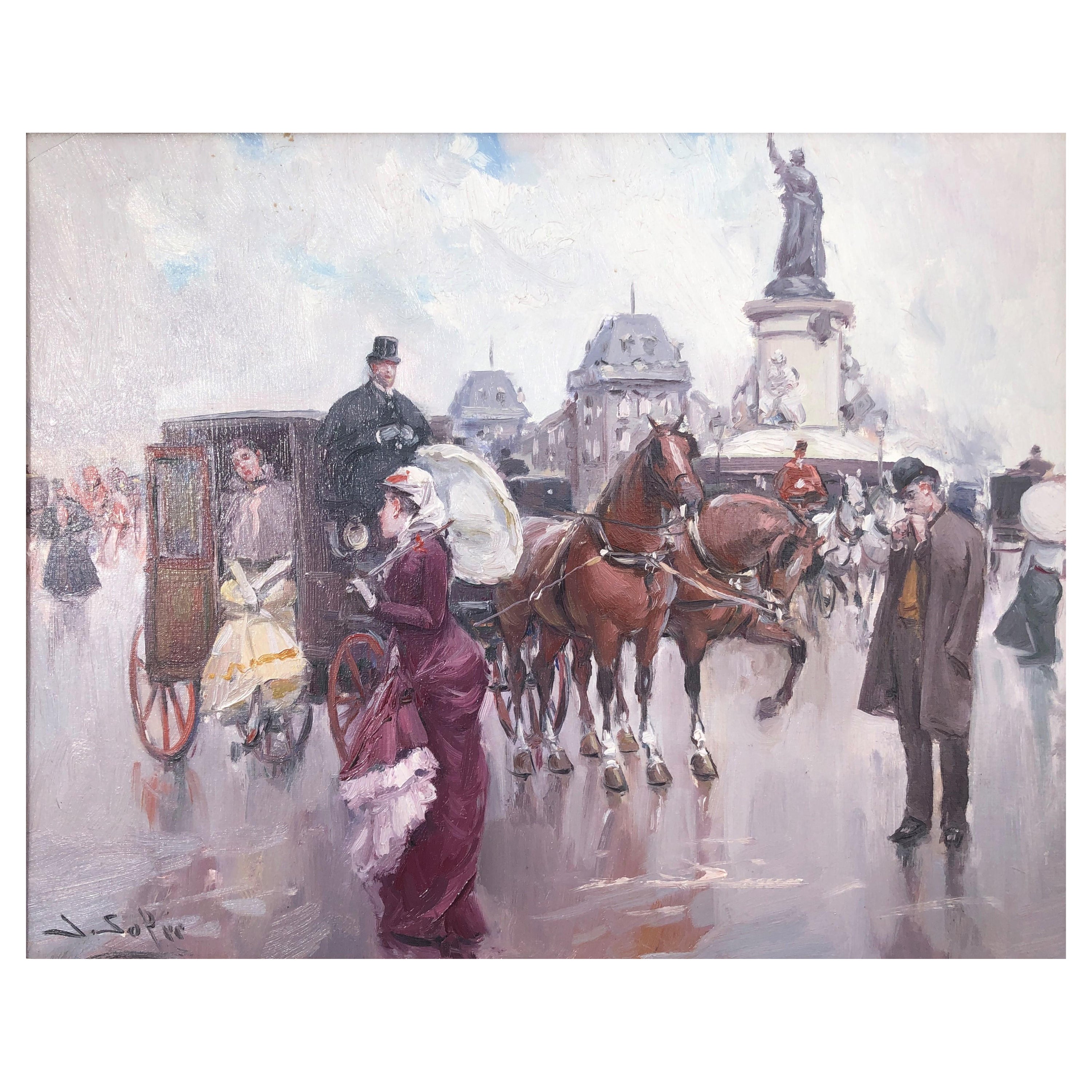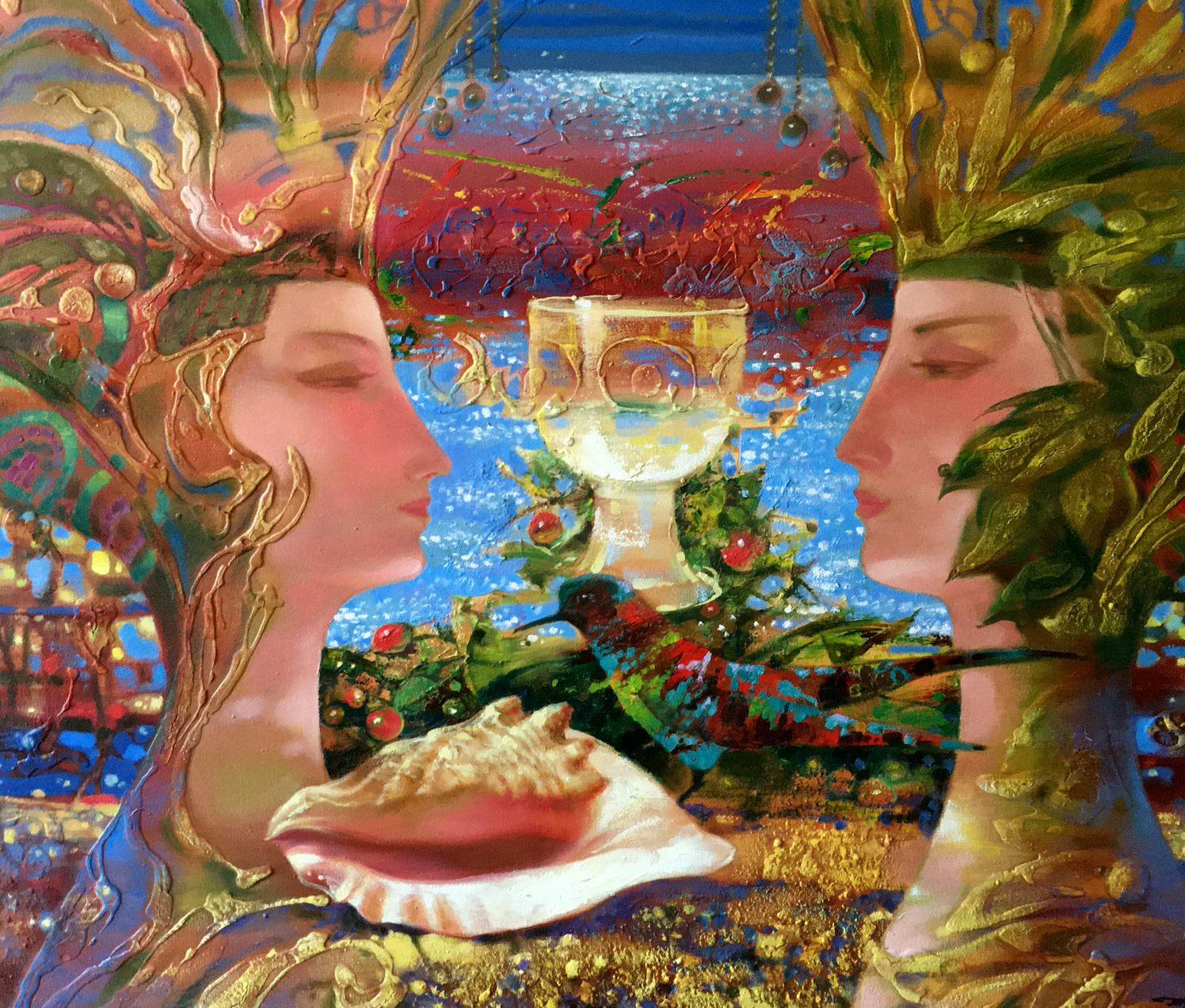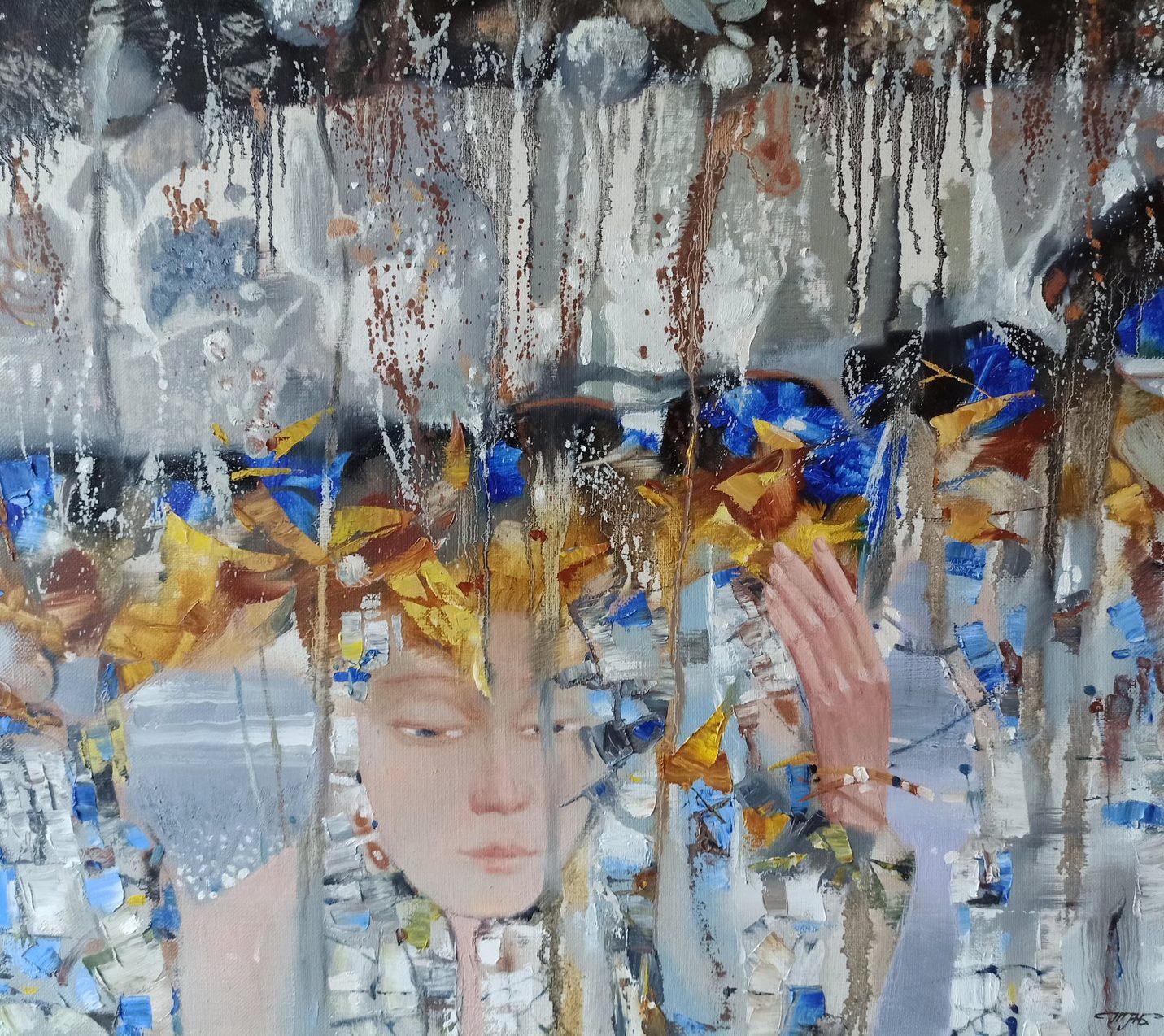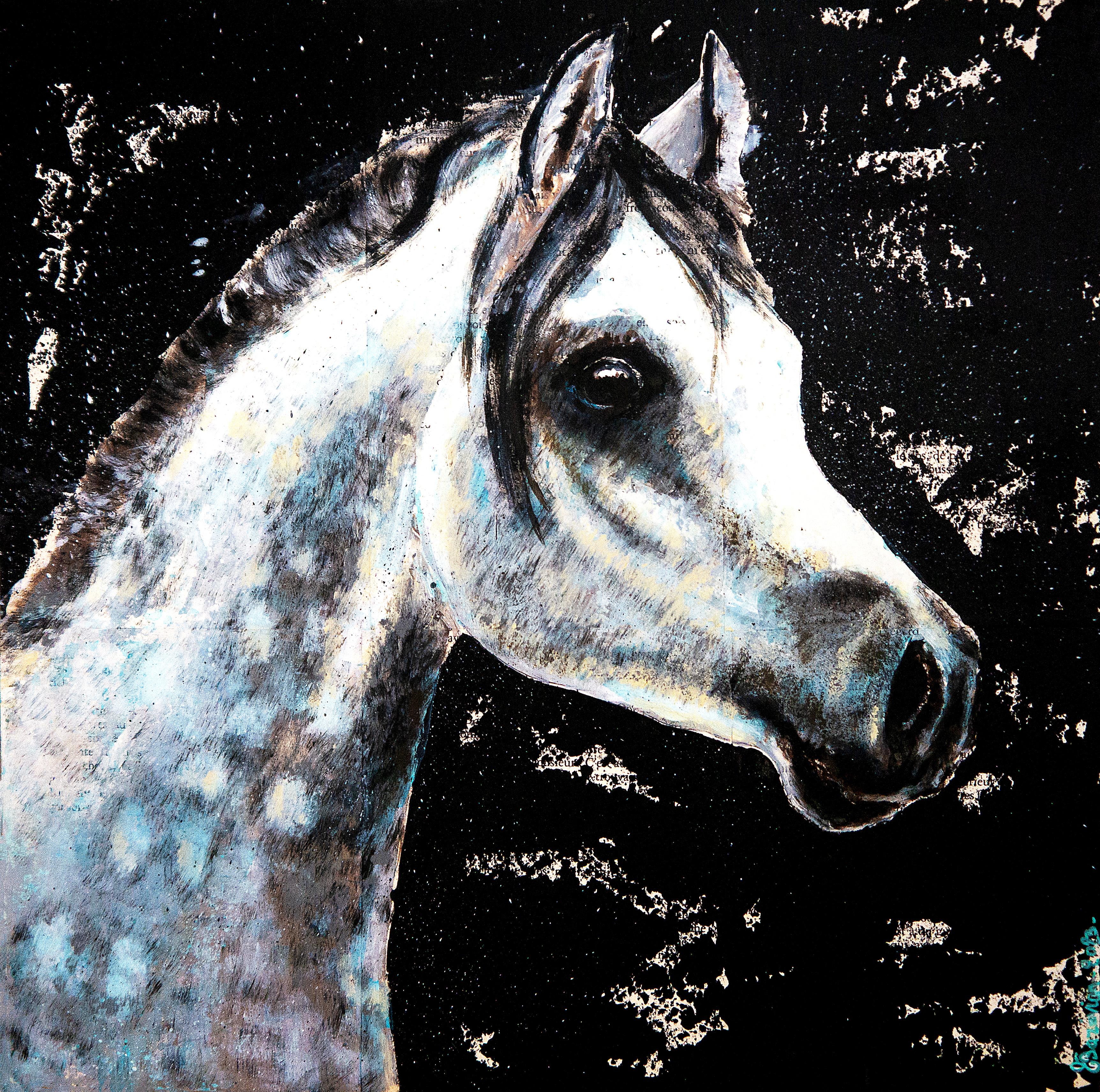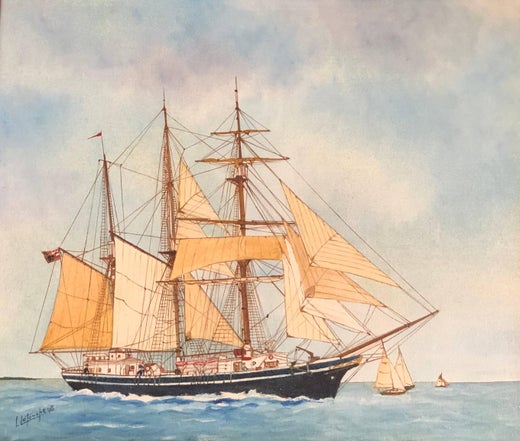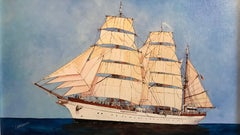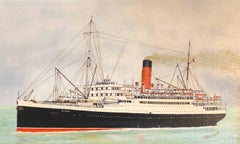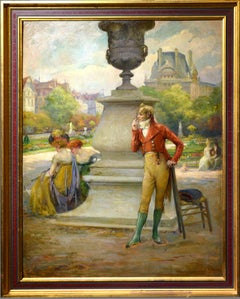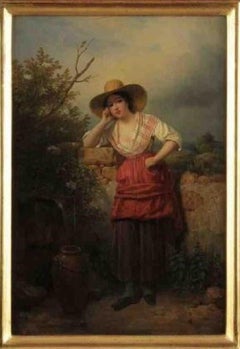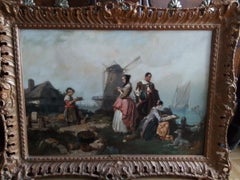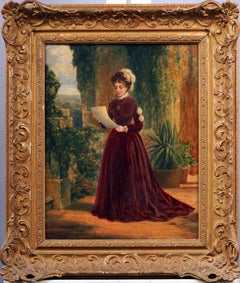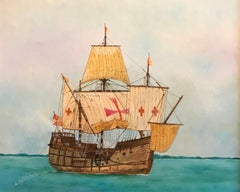
The Santa Maria - Christopher Columbus's ship, signed oil painting
View Similar Items
Want more images or videos?
Request additional images or videos from the seller
1 of 9
Auction endedBrowse Current Auctions
Louis LetoucheThe Santa Maria - Christopher Columbus's ship, signed oil paintingC. 1996
C. 1996
Price:$476.59
$981.46List Price
About the Item
- Creator:Louis Letouche (1924 - 2015, French)
- Creation Year:C. 1996
- Dimensions:Height: 16 in (40.64 cm)Width: 19 in (48.26 cm)Depth: 1 in (2.54 cm)
- Medium:
- Movement & Style:
- Period:
- Condition:
- Gallery Location:Cirencester, GB
- Reference Number:1stDibs: LU50932591621
Louis Letouche
Louis Letouche was passionate about painting. He began to paint in 1958. Self-taught he turned to figurative painting privileging the landscapes and portraits of marine.
Several exhibitions have been devoted to this painter around Paris Galleries.

About the Seller
5.0
Platinum Seller
Premium sellers with a 4.7+ rating and 24-hour response times
Established in 1989
1stDibs seller since 2016
4,576 sales on 1stDibs
Typical response time: 1 hour
Authenticity Guarantee
In the unlikely event there’s an issue with an item’s authenticity, contact us within 1 year for a full refund. DetailsMoney-Back Guarantee
If your item is not as described, is damaged in transit, or does not arrive, contact us within 7 days for a full refund. Details24-Hour Cancellation
You have a 24-hour grace period in which to reconsider your purchase, with no questions asked.Vetted Professional Sellers
Our world-class sellers must adhere to strict standards for service and quality, maintaining the integrity of our listings.Price-Match Guarantee
If you find that a seller listed the same item for a lower price elsewhere, we’ll match it.Trusted Global Delivery
Our best-in-class carrier network provides specialized shipping options worldwide, including custom delivery.More From This Seller
View AllThe Gorch Fock II Tall Ship of the German Navy
By Louis Letouche
Located in Cirencester, Gloucestershire
The Gorch Fock II
by Louis Letouche (French 1924-2015)
oil painting on linen canvas, stretched over board
framed
Framed size: 14 x 22.5 inches
Superb oil painting by the well listed French marine artist Louis Letouche (1924-2015). The painting portrays the German navy...
Category
21st Century and Contemporary Realist Portrait Paintings
Materials
Oil
$687 Sale Price
30% Off
Cuauhtémoc, signed oil painting
By Louis Letouche
Located in Cirencester, Gloucestershire
Cuauhtémoc, 1982
by Louis Letouche (French 1924-2015)
oil painting on linen canvas, stretched over board
framed
Framed size: 15 x 21.75 inches
Superb oil painting by the well listed French marine artist Louis Letouche (1924-2015). The painting portrays the 20th Century ship titled: Cuauhtemoc, 1982.
ARM Cuauhtémoc is a sail training vessel of the Mexican Navy, named for the last Mexica Hueyi Tlatoani Cuauhtémoc who was captured and executed in 1525.
She is the last of four sister...
Category
1990s Realist Portrait Paintings
Materials
Oil
$687 Sale Price
30% Off
RMS Laconia, signed oil painting
By Louis Letouche
Located in Cirencester, Gloucestershire
RMS Laconia, 1921
by Louis Letouche (French 1924-2015)
oil painting on linen canvas, stretched over board
framed
Framed size: 14.25 x 22.75 inches
Superb oil painting by the well ...
Category
1990s Realist Portrait Paintings
Materials
Oil
$687 Sale Price
30% Off
Imerethie II, signed oil painting
By Louis Letouche
Located in Cirencester, Gloucestershire
Imerethie II, 1924
by Louis Letouche (French 1924-2015)
oil painting on linen canvas, stretched over board
framed
Framed size: 13.5 x 22.5 inches
Superb oil painting by the well l...
Category
1990s Realist Portrait Paintings
Materials
Oil
$687 Sale Price
30% Off
Gota Lejon, signed oil painting
By Louis Letouche
Located in Cirencester, Gloucestershire
Göta Lejon, 1746.
by Louis Letouche (French 1924-2015)
oil painting on linen canvas, stretched over board
framed
Framed size: 15 x 21.75 inches
Superb oil painting by the well lis...
Category
1990s Realist Portrait Paintings
Materials
Oil
$687 Sale Price
30% Off
Sagres Ship Portrait signed oil painting
By Louis Letouche
Located in Cirencester, Gloucestershire
Sagres, 1937
by Louis Letouche (French 1924-2015)
oil painting on linen canvas, stretched over board
framed
Framed size: 16 x 19 inches
Superb oil painting by the well listed French marine artist Louis Letouche (1924-2015). The painting portrays the early 20th Century ship titled: Sagres, 1937.
The three-masted ship was launched under the name Albert Leo Schlageter on 30 October 1937 at Blohm & Voss in Hamburg for Nazi Germany's Kriegsmarine. The ship was named after Albert Leo Schlageter, who was executed in 1923 by French forces occupying the Ruhr area. Her first commander was Bernhard Rogge. Sagres is a sister ship of the Gorch Fock, the Horst Wessel, and the Romanian training vessel Mircea. Another sister, Herbert Norkus, was not completed, while Gorch Fock II was built in 1958 by the Germans to replace the ships lost after the war.
Following a number of international training voyages, the ship was used as a stationary office ship after the outbreak of World War II and was only put into ocean-going service again in 1944 in the Baltic Sea. On 14 November 1944 she hit a Soviet mine off Sassnitz and had to be towed to port in Swinemünde. Eventually transferred to Flensburg, she was taken over there by the Allies when the war ended and finally confiscated by the United States.
In 1948, the U.S. sold her to Brazil for a symbolic price of $5,000 USD. She was towed to Rio de Janeiro where she sailed as a school ship for the Brazilian Navy under the name Guanabara. In 1961, Ambassador Teotónio Pereira of Portugal, who was also a man of the sea...
Category
1990s Realist Portrait Paintings
Materials
Oil
$687 Sale Price
30% Off
You May Also Like
French Genre Scene in Parisian park 19th Century Oil painting
By Emile Tabary
Located in Stockholm, SE
Signed by Émile Tabary. Lively scene in in a parisian park, pictured moment of city life of the late 19th century. In this painting, some irony and humor are very subtly felt. One of...
Category
Late 19th Century Realist Landscape Paintings
Materials
Oil, Cardboard
Rare french art by Francois Grenier - Empire, woman at a spring, oil on canvas.
Located in PARIS, FR
Conditions : Excellent overall Conditions.
Free US CONTINENTAL Shipping, incl Europe and Asia.
Admire the exquisite beauty of this rare French art piece by Francois Grenier, formed ...
Category
Early 19th Century Realist Landscape Paintings
Materials
Oil
Eugène Lepoittevin. A drawing lesson by the Sea - oil on canvas - signed 1853
Located in PARIS, FR
Conditions : Good overall Conditions with minor retouching under UV light (as seen on pictures). Slight invisible crack in the canvas. Original Victorian frame in excellent conditio...
Category
Mid-19th Century Realist Landscape Paintings
Materials
Oil
Antique English Realist Genre Scene Framed High Society Portrait Oil Painting
Located in Buffalo, NY
George Dunlop Leslie (1835 - 1921) Antique English realist oil painting. Oil on canvas. Signed. Framed. Measuring 17 by 20 overall and 12 by 15 paining alone.
Artist Bio:
George Dunlop Leslie RA (London 2 July 1835 – 21 February 1921 Lindfield, Sussex) was a British genre painter, author and illustrator. He was born into an artistic family; his father was the notable genre painter Charles Robert Leslie RA, and his uncle Robert Leslie was a marine artist. He studied art first at Cary's Art Academy, then from 1854 at the Royal Academy. His first exhibition at the Academy was in 1859, and he showed his work every year thereafter. He became an Associate (ARA) in 1868 and a full Royal Academician (RA) in 1876.George Dunlop Leslie lived early on in St John's Wood (London), and was part of the St John's Wood Clique, a group of artists who favoured light-hearted genre subjects. From 1884–1901 he was resident at "Riverside", St. Leonard's Lane, Wallingford, Oxfordshire. His sister Mary Leslie (1833–1907), also an artist, lived at "Cromwell Lodge" next door. Fellow artist, James Hayllar, was also a resident of the village and they painted a portrait of Queen Victoria together for her Golden Jubilee in 1887. From 1906 he lived at "Compton House" in Lindfield, SussexHis early works, such as Matilda (1860) showed the strong influence of the Pre-Raphaelites, but he settled into a more academic, aesthetic, style of painting with the aim of showing "pictures from the sunny side of English domestic life". He often used children as subjects and his work was praised by John Ruskin for its portrayal of the "sweet quality of English girlhood". One of his pictures, This is the Way we Wash our Clothes, was used as a poster in an advertising campaign for soap. Despite its apparently trivial subject matter, however, Leslie's work was highly regarded by critics of the time.In 1889 during his time at Riverside house in Wallingford Leslie is credited with painting four angel murals in St Leonards Church.Leslie was also an author and had several books published. Our river (1888), Letters to Marco (1893) and Riverside letters (1896) were all illustrated by him in black and white, and based on personal observations of life and nature in his local area. He also wrote a history of the early years of the Royal Academy - The inner life of the Royal Academy.Leslie was married to Lydia. They had a daughter Alice (depicted in his painting Alice in Wonderland) and a son Peter Leslie...
Category
1880s Realist Portrait Paintings
Materials
Canvas, Oil
Museum Quality American School School Young Woman Portrait Framed Oil Painting
Located in Buffalo, NY
Incredible quality American school portrait painting. Oil on canvas. Framed. No signature found.
Category
1880s Realist Portrait Paintings
Materials
Canvas, Oil
$3,600 Sale Price
20% Off
Amazing 19th Century Dutch Skating Woman Winter Landscape Signed Oil Painting
Located in Buffalo, NY
A powerful 19th century landscape and portrait painting. A young dutch woman lacing up her skates. Really rare and well painted. Oil on canvas, lain to board. Housed in a beautif...
Category
1870s Realist Portrait Paintings
Materials
Canvas, Oil
$2,760 Sale Price
20% Off
Recently Viewed
View AllMore Ways To Browse
Ted Shawn
Terracotta Vase Face
Tete De Taureau
Thomas Kennaugh
Thomas Moran Lithograph
Tiffany Holiday China
Tokuriki Tomikichiro
Toros En Vallauris
Tracey Emin Kate Moss
Tracey Emin Towel
Trapeze Movie Poster
Trevor James Portrait
Ugo Cara
Ulisse Aldrovandi
Us Coast Guard Recruiting Poster
Used Bic Lighters
Used Saddle Bronc Saddle
Used Salon Hair Dryer
